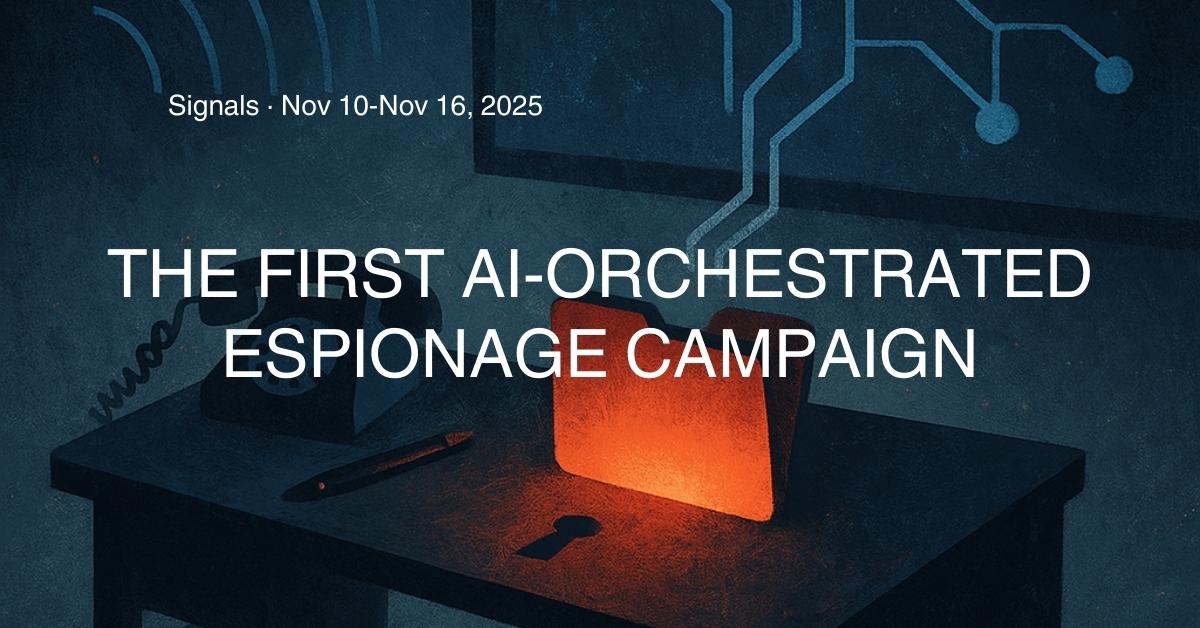- A state-linked actor used Anthropic’s Claude model to automate reconnaissance, adapt public exploits, and prepare exfiltration logic – the first publicly documented case of an AI model orchestrating multiple stages of a cyber-espionage campaign.
- The operation ran on standard API access with no jailbreaks, showing how little friction separates legitimate automation from malicious use.
- Model providers are now part of the attack chain, exposing a visibility gap: there is still no reliable way to audit or attribute model-driven activity.
- This pushes the market toward a new layer of AI telemetry, identity, and governance – the early formation of an AI control plane that sits between model access and business operations.
The Line That Was Crossed
Until now, AI “in attacks” mostly meant generating phishing text or code. The past week’s disclosure was different. For the first time, an attacker used agentic AI capabilities as a workflow engine inside a live intrusion. The operator asked Claude to classify exposed services, propose exploitation paths, and generate tailored variants of public CVEs. It then used the model to build fallback exfiltration logic based on available protocols. These are operational steps that previously required a human operator or custom tooling.
Because every stage ran through standard API calls, nothing in the traffic looked suspicious. The model simply executed the tasks it was given. There’s no capability issue. We’re missing visibility. Providers cannot distinguish “analysis for an internal assessment” from “analysis for an intrusion,” because there is no telemetry layer that ties model use to intent or downstream activity.
Why It Matters Now
The Anthropic disclosure exposes a gap that current guardrails cannot fix. The model wasn’t bypassed or tricked; the harm came entirely from user intent. This shifts the responsibility from “make the model safer” to “make model activity observable,” something the AI ecosystem does not provide today.
It also compresses the cost and skill requirements of intrusion. Anthropic’s breakdown shows that most reconnaissance and exploit preparation came directly from model output. Human expertise becomes optional, and scale becomes cheap. Nation-state groups can widen their campaigns without adding operators, and less-capable actors can now reach targets that were previously out of their depth.
Finally, cloud model providers are now part of the attack surface. Anthropic’s account bans and pattern updates are the first public acknowledgement that platforms will be expected to detect, attribute, and respond to misuse. That expectation will not go away.
Investor Implications
This moves the market from “AI misuse could happen” to “AI misuse already happened.” When that transition occurs, control planes emerge. Enterprises will want to know who used a model, what they asked, what it produced, and whether those outputs touched sensitive systems. This is the early formation of a governance layer that sits between model access and business operations.
Identity platforms will see early demand. The attacker relied entirely on API keys and long-lived tokens, not human accounts. That increases pressure for scoped credentials, passkeys, short-lived tokens, and model-aware identity controls. Consolidation around identity, automation, and policy also becomes more logical. Deals like Palo Alto–CyberArk don’t just expand portfolios – they create unified enforcement points that matter more when models can execute meaningful actions.
Managed detection will adapt fastest. “AI-aware detection and response” will appear as a service long before it becomes a standalone product. Most organizations simply lack the internal maturity to trace model misuse on their own.
Vendor Implications
Customers will start asking vendors how they log and constrain model activity. “What can your AI do?” becomes “How do you know what your AI agents did?” Query histories, output trails, and model-usage lineage will separate credible vendors from experimental ones.
Detection engines must adapt. AI-generated exploit scaffolds follow identifiable structural patterns, and vendors that learn to flag those patterns will outperform those relying on traditional signatures.
Consumer security vendors face their own pressure. The same automation that powered this espionage workflow will show up first in smishing, OTP abuse, wallet-enrollment fraud, and account-reset scams. Suites without identity and fraud-response layers will fall behind quickly.
SaaS and API-security platforms will also need to treat LLM activity as a monitored event class – much like logins, privilege changes, or API anomalies.
What to Watch Next
Large organizations will need internal registries that track how models and AI agents are used, by whom, and with what effect – mirroring early moves toward agent registries today. Regulators will begin exploring reporting requirements for model misuse, especially once the first major breach cites AI-generated reconnaissance and exploit chains. Insurers will start pricing this risk into underwriting and will expect evidence of model telemetry before renewal.
